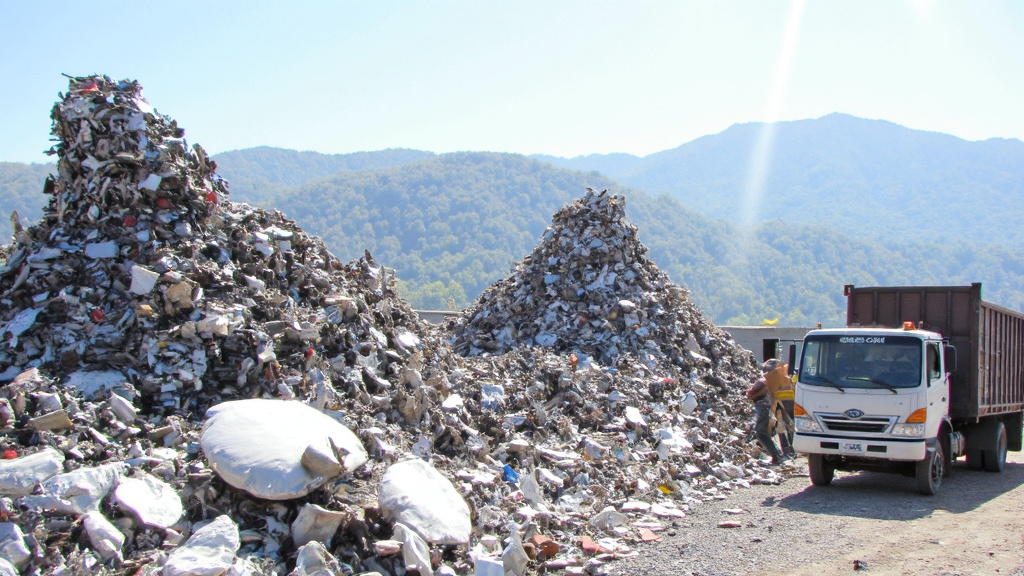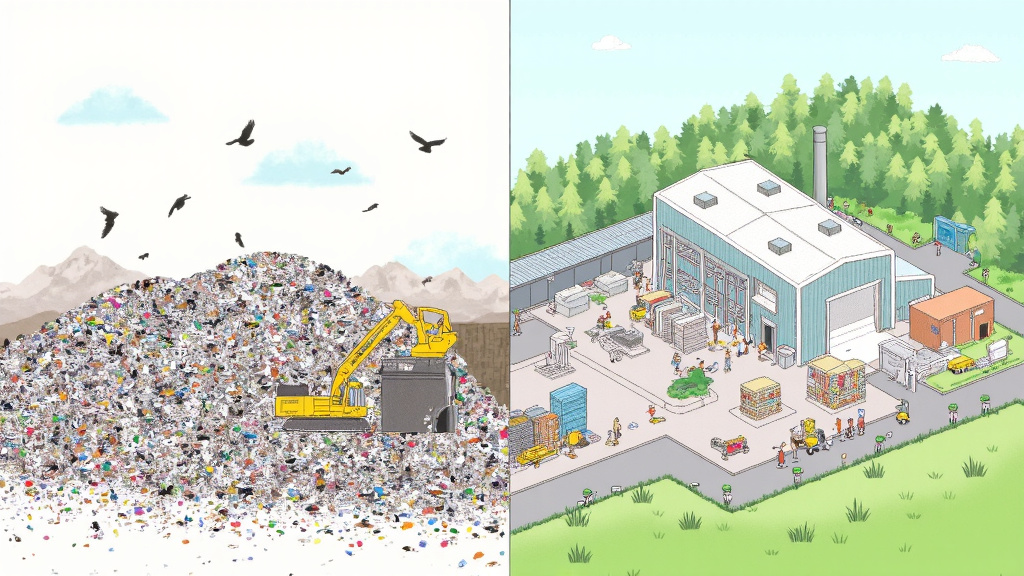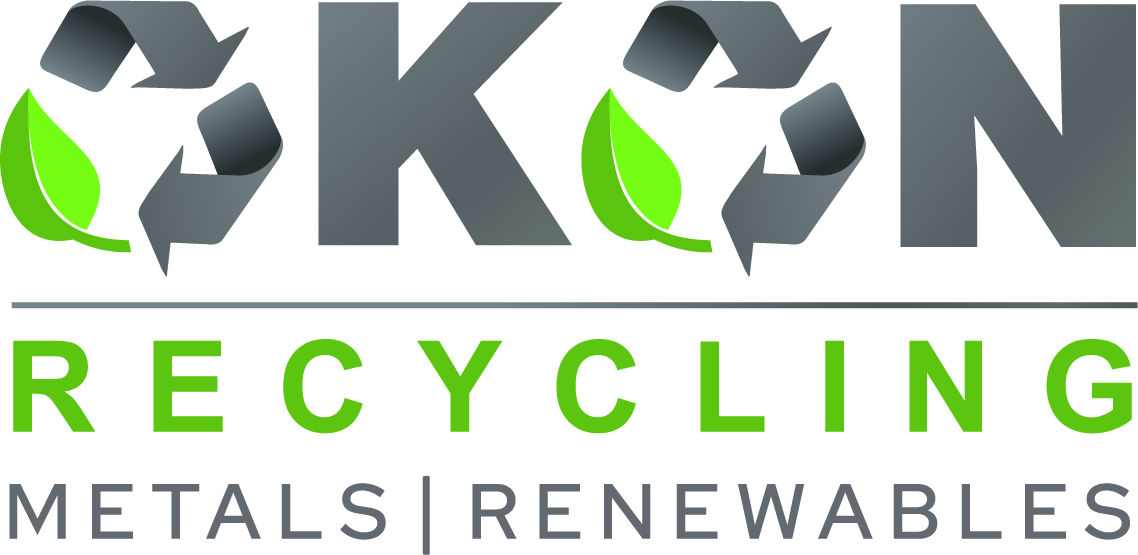5901 Botham Jean Blvd, Dallas, TX 75215
What Are the Common Recycling Myths and Misconceptions?
April 17, 2025Americans generate over 250 million tons of trash daily, with more than half ending up in landfills despite recycling efforts. This issue arises not only from negligence but also from confusion about recycling practices. Misconceptions about what can and cannot be recycled have persisted since recycling became mainstream in the United States.
These myths don’t just cause minor inefficiencies—they actively hinder environmental progress. When materials are improperly sorted or contaminated, entire batches of recyclable items may be rejected and sent to landfills. This is critical as resource conservation is vital for our planet’s sustainability.
Understanding the difference between recycling fact and fiction is essential for making a meaningful environmental impact. The recent Chinese ban on accepting American recyclables has compelled domestic recycling programs to be more stringent about contamination, making accurate recycling knowledge more important than ever.
What items can actually be recycled?

Workers operating machinery at a scrapyard, sorting and loading recycled materials.
One common myth is that all plastics can be recycled. In reality, not all plastic items are accepted by local recycling programs. Plastic grocery bags, for example, require specialized equipment and should be recycled separately at retail or grocery stores rather than in household bins. Their thin, flexible nature can jam sorting machinery at recycling facilities, causing costly delays and repairs.
Paper and cardboard products are generally widely accepted in recycling programs. Newspapers, magazines, mail (even those with plastic windows), paperback books, and flattened cardboard boxes can typically go in your recycling bin. However, shredded paper may not be accepted in all programs because it is too small and light to be properly sorted, and it can cling to other recyclables or equipment.
Glass bottles and jars are highly recyclable and can be processed repeatedly without losing quality. Most curbside programs accept different glass colors mixed together, though broken glass should be kept out as it poses safety risks to workers. When recycling glass bottles, remember to remove metal caps and recycle them separately.
For metal recyclables, aluminum cans and clean aluminum foil are readily accepted by most programs. Steel cans, baking tins, and empty aerosol cans are typically recyclable as well, though they should be free of food residue. The recycling rate for aluminum items in the U.S. was about 35% in 2018, according to the EPA, showing significant room for improvement.
Common items that should not be placed in recycling bins include Styrofoam containers, plastic utensils, plastic straws, rope or string, dirty diapers, and food-contaminated containers. Additionally, hazardous materials like batteries, electronics, and used motor oil require special handling and should never be placed in standard recycling bins.
For improved recycling efficiency, containers should be emptied and rinsed clean of food residue—though they don’t need to be perfectly spotless. What recyclers often call “spatula-clean” is sufficient. Labels can typically remain on containers, and in most cases, plastic caps can stay on bottles.
Understanding Plastic Recycling Symbols
The resin identification codes (numbers 1-7 inside the triangular recycling symbol) help identify the type of plastic, but these symbols don’t necessarily mean an item can be recycled in your community. Plastics numbered 1 (PET) and 2 (HDPE) are most commonly accepted, while others may have limited recyclability depending on local facilities.
Before assuming an item is recyclable, check your local guidelines. Many communities and waste management companies now offer online tools or apps where you can search specific items to determine if they’re accepted in your area. Some even provide custom recycling calendars and reminder notifications for collection days.
Do recyclables need to be cleaned before disposal?
A common misconception is that it’s acceptable to toss recyclables into the bin without cleaning them. This is incorrect. Dirty containers with food residue can contaminate entire batches of recyclable materials, turning them into landfill waste.
In a single-stream recycling system, where all recyclables travel together, leftover yogurt from a container can smear onto cardboard and paper products, making them unrecyclable. Paper and cardboard soiled with food or liquid are rejected at sorting facilities because manufacturers who purchase recycled materials have strict quality standards—typically allowing no more than 1% contamination.
The good news is that recyclables don’t need to be spotless—just “clean-ish.” A quick rinse to remove most food particles is sufficient. For sticky substances like peanut butter or mayonnaise, a rubber spatula can help scrape out most of the residue before rinsing. For oily containers, adding a drop of dish soap and some water before giving them a quick shake can make cleaning easier.
This simple step not only ensures your recyclables are actually recycled but also protects the health and safety of workers at recycling facilities. Without proper cleaning, containers can develop mold and harbor germs, creating unpleasant and potentially hazardous working conditions for those handling these materials.
For items like pizza boxes, you can tear off the greasy portions and recycle the clean parts. Bottles and cans need to be emptied completely but don’t require thorough washing. Just remember to keep your recycling dry as well—wet paper and cardboard quickly mold and become difficult to process.
These small actions—rinsing containers, scraping out food residue, and keeping recyclables dry—might seem trivial individually, but collectively they determine whether our recycling efforts succeed or fail.
| Item | Contamination Risk | Prevention Method |
|---|---|---|
| Plastic Bags | Jams sorting machinery | Recycle separately at stores |
| Food Residue | Contaminates paper products | Rinse containers, keep clean |
| Greasy Pizza Boxes | Ruins paper recycling | Remove greasy parts |
| Batteries | Fire risks, chemical leaks | Use designated drop-off programs |
| Hazardous Waste | Requires special handling | Dispose of separately |
Does recycling really make a difference?

Despite skepticism about recycling’s effectiveness, evidence supports its crucial role in environmental conservation. Recycling significantly reduces energy consumption compared to manufacturing products from virgin materials. For example, recycling aluminum cans uses 95% less energy than producing them from raw bauxite ore, while recycling one ton of paper can save up to 4,100 kilowatt-hours of energy.
The environmental benefits extend beyond energy savings. According to EPA data, recycling and composting of municipal solid waste saved over 193 million metric tons of carbon dioxide equivalent in 2018 alone. This significant reduction in greenhouse gas emissions helps combat climate change and improves air quality. Additionally, recycling one ton of aluminum can conserve up to 8 tons of bauxite ore, showing how this practice preserves our planet’s finite natural resources.
Recycling also addresses the growing landfill crisis. Diverting materials from landfills reduces methane emissions (a potent greenhouse gas) and minimizes soil and water contamination risks. This process creates a more circular economy where materials maintain their value instead of becoming waste after a single use.
Beyond environmental benefits, recycling strengthens our economy. The recycling industry in the United States generates approximately 681,000 jobs, $37.8 billion in wages, and $5.5 billion in tax revenues annually. This equates to 1.17 jobs created for every 1,000 tons of materials recycled, showing that environmental responsibility can also drive economic prosperity.
While recycling faces challenges such as contamination issues, technological limitations, and varying community infrastructure, these obstacles don’t diminish its overall positive impact. The key is continual improvement of recycling systems while focusing on reducing consumption and reusing materials whenever possible.
Conclusion: The truth about recycling

Understanding recycling myths is crucial for effective environmental stewardship. While not perfect, recycling remains one of the most impactful actions for environmental protection. By properly sorting materials and participating in community recycling programs, we contribute to resource conservation, pollution reduction, and energy savings—key components of a sustainable future.
The facts are clear: recycling aluminum cans saves up to 95% of the energy needed for new production, recycling paper preserves forests that sequester carbon and support biodiversity, and diverting materials from landfills reduces harmful greenhouse gas emissions. Despite challenges like contamination and infrastructure limitations, the environmental and economic benefits of recycling make it essential for sustainability.
For expert guidance on effective recycling solutions for your business or municipality, contact Okon Recycling at 214-717-4083.
